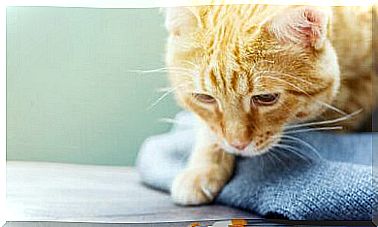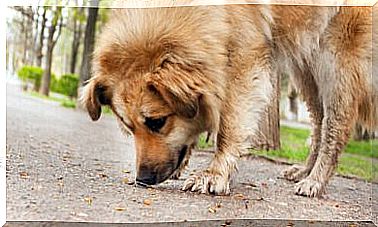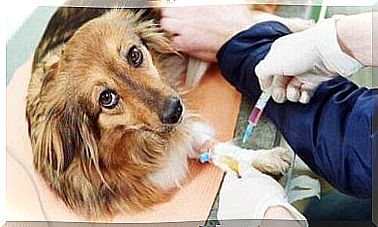Scottish Wildcat: The Recovery Plan To Save Him
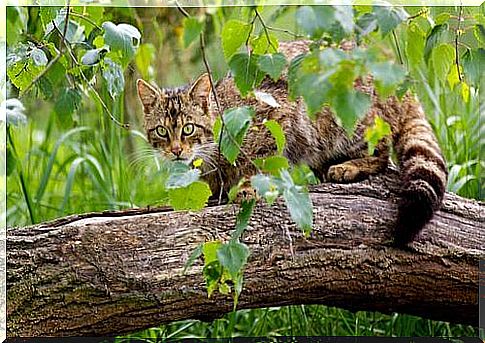
The Scottish wildcat is one of the remaining members of British wildlife. Over the centuries, in this geographical region, various types of animal species, both small and large, have been found.
Today, however, the fauna of these ecosystems has been reduced in terms of animal diversity. Therefore, here we show you information on the current situation and recovery plans for this specific mammal of great interest: the Scottish wildcat.
Scottish wildcat: a plan to save it
Great Britain, especially Scotland, is home to the Scottish wildcat. This cat is part of a recovery plan, as its survival is seriously in jeopardy. The recovery plan was called Breed and release . Under this program, the first wild cat conservation and breeding center will be built in the Scottish Highlands.
Although there are other recovery centers, this one will only focus on Scottish feral cats. The long-term goal is to introduce specimens of this species to different parts of Scotland. The creation of the center is the latest attempt to preserve this species, as it is considered on the verge of extinction, with only 20-200 living specimens.
This extreme situation is the result of several factors, such as habitat loss or the emergence of diseases. Thankfully, a litter of Scottish feral cats has already been born giving hope.
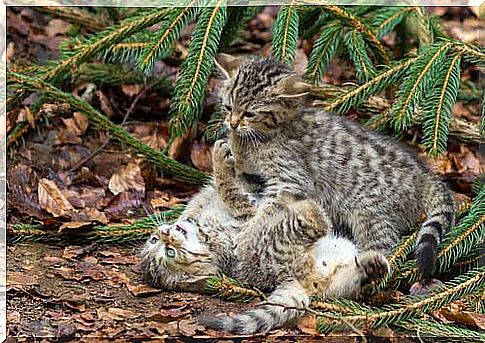
What you need to know about the Scottish wildcat
The Scottish wildcat is called by the scientific name of Felis silvestris silvestris . This animal, also called Felis silvestris grampia , is native to the Scottish Highlands. Today this feline is on the verge of disappearance. However, it was once widespread throughout Britain.
Humans are primarily responsible for this situation, as they have hunted and hunted this species for centuries. Other factors relevant to its population decline were habitat loss and hybridization.
Observed by an inexperienced eye, this animal can be confused with a domestic cat. However, the reality is quite different. Here are some of the characteristics that differentiate Scottish feral cats from domestic cats:
- These cats can reach up to twice the size of a domestic cat.
- They have their own distinctive pattern of stripes on the coat that distinguishes them from other species.
- Their coat is denser, accompanied by a wider tail.
- They avoid humans by escaping from their presence.
Techniques for the recovery of endangered species
Usually, some particular strategies are followed in the recovery plans aimed at the preservation of the species. In this specific case, the most used are the following:
Captive breeding of the Scottish wildcat
One of the most popular approaches is captive breeding. In this way it is possible to control the number of babies born and how many are actually released into nature.
It is also a way to reduce the transmission of diseases and to help their survival. This technique involves a great deal of control over the situation of the species on a small scale. However, it is also a responsibility, as you need to know when is the right time to free the specimens and thus maximize their chances of survival in the wild.
In-kind monitoring
Among the strategies followed is the monitoring of the released specimens. For this purpose, they are equipped with GPS locators, usually implanted in a collar.
This allows them to follow their movements and study their behavior. In addition, GPS collars are usually accompanied by cameras that record the movements. However, video cameras can also be placed in strategic points of nature (photo-trap). The goal is to take care of the animals, but at the same time trying to disturb them as little as possible.
Avoid hybridization with the domestic cat
One of the challenges of this program, in particular, is the conservation of the Scottish wildcat genome. Hybridizations with domestic cats appear to have seriously altered their genetic makeup.
Therefore, it is necessary to study the genome of the wild populations monitored. In this way it is possible to obtain more information and increase the diversity of the population. It is not yet known how hybridization affected this species, but it is considered the greatest risk. For this reason, among the recovery techniques proposed, we try to prevent this danger.
Raise awareness in the community
Another important aspect is to educate the community in general, so that they know how to behave if they are in front of a Scottish cat. In most cases, they are runaway animals that usually keep their distance from humans.
However, people may mistake them for domestic cats and try to catch them, frightening them. While with this education program, it promotes the message that the Scottish wildcat is part of the cultural heritage.
Throughout history, this animal has been the symbol of some communities. It also played a part in British mythology, as these cats have been described as bold and ferocious hunters.
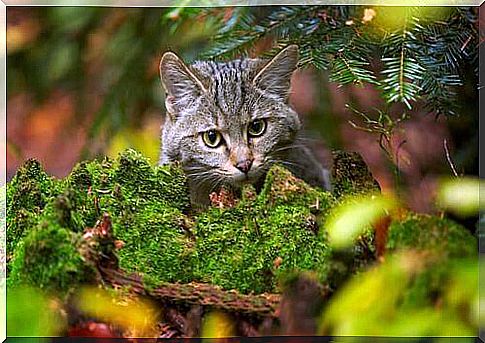
On the verge of extinction
The recovery strategies of a species are implemented when the number of specimens in nature is in a critical phase. This is the case of the Scottish wildcat, whose population has been drastically reduced.
Thanks to these projects it is possible to avoid the permanent disappearance of these species. In other countries, similar strategies are adopted for the conservation of some animal species. For example, in Spain, one of the recovery plans was to preserve the Iberian lynx.




